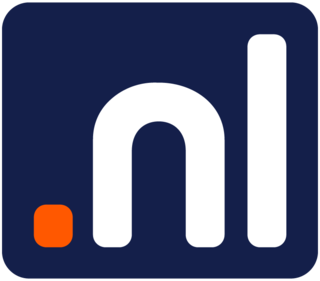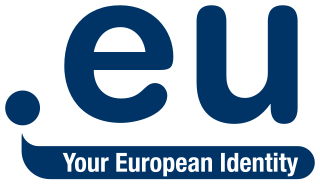Criticism
The new order of domain registering in 2010 was met with great controversy. The relaunch of the registry was at one point delayed to be reassessed. [11] When the relaunch was finalized, the annual fee for a .ee domain was announced to be 285 Estonian kroons (18.2 euros) plus tax, which was met with wide criticism. [12] A list of shortcomings was presented in a public notice to Estonian Internet Foundation by Tõnu Samuel and Jaan Jänesmäe, mentioning that the .ee domain had become the most expensive TLD in Europe. [12] Their cause gained over 800 supporters on Facebook. [13]
The NGO Estonian Internet Community was founded partly as a reaction to the controversial domain reform with 22 founding members. [13] Its board is made up of Tõnu Samuel, Elver Loho and Heiti Kender. In 2010 it noted on its blog that several of its members had lost faith in the possibility of any sort of compromise and had independently written e-mails to IANA asking them to step in to resolve the controversy. [14]
Over the following years the annual fee has gradually dropped, [15] reaching 6 euros on 1 January 2017. [9]
In the Internet, a domain name is a string that identifies a realm of administrative autonomy, authority or control. Domain names are often used to identify services provided through the Internet, such as websites, email services and more. As of 2017, 330.6 million domain names had been registered. Domain names are used in various networking contexts and for application-specific naming and addressing purposes. In general, a domain name identifies a network domain or an Internet Protocol (IP) resource, such as a personal computer used to access the Internet, or a server computer.
The domain com is a top-level domain (TLD) in the Domain Name System (DNS) of the Internet. Created in the first group of Internet domains at the beginning of 1985, its name is derived from the word commercial, indicating its original intended purpose for subdomains registered by commercial organizations. Later, the domain opened for general purposes.

The domain name .org is a generic top-level domain (gTLD) of the Domain Name System (DNS) used on the Internet. The name is truncated from 'organization'. It was one of the original domains established in 1985, and has been operated by the Public Interest Registry since 2003. The domain was originally "intended as the miscellaneous TLD for organizations that didn't fit anywhere else." It is commonly used by non-profit organizations, open-source projects, and communities, but is an open domain that can be used by anyone. The number of registered domains in .org has increased from fewer than one million in the 1990s, to ten million in 2012, and held steady between ten and eleven million since then.

.nl is the Internet country code top-level domain (ccTLD) for the Netherlands. It is one of the most popular ccTLDs with over six million registered .nl domains as of 29 September 2020.

.eu is the country code top-level domain (ccTLD) for the European Union (EU). Launched on 7 December 2005, the domain is available for any person, company or organization based in the European Union. This was extended to the European Economic Area in 2014, after the regulation was incorporated into the EEA Agreement, and hence is also available for any person, company or organization based in Iceland, Liechtenstein and Norway. The TLD is administered by EURid, a consortium originally consisting of the national ccTLD registry operators of Belgium, Sweden, and Italy, joined later by the national registry operator of the Czech Republic. Trademark owners were able to submit registrations through a sunrise period, in an effort to prevent cybersquatting. Full registration started on 7 April 2006.
A domain name registrar is a company that manages the reservation of Internet domain names. A domain name registrar must be accredited by a generic top-level domain (gTLD) registry or a country code top-level domain (ccTLD) registry. A registrar operates in accordance with the guidelines of the designated domain name registries.
The domain name is a generic top-level domain (gTLD) in the Domain Name System of the Internet. It is intended for use by individuals for representation of their personal name, nicknames, screen names, pseudonyms, or other types of identification labels.

.us is the Internet country code top-level domain (ccTLD) for the United States. It was established in early 1985. Registrants of .us domains must be U.S. citizens, residents, or organizations – or foreign entities with a presence in the United States or any territory of the United States. Most registrants in the U.S. have registered for .com, .net, .org and other gTLDs, instead of .us, which has primarily been used by state and local governments, even though private entities may also register .us domains. The domain is managed by Registry Services, LLC, a domain name registry, on behalf of the United States Department of Commerce.
.ca is the Internet country code top-level domain (ccTLD) for Canada. The domain name registry that operates it is the Canadian Internet Registration Authority (CIRA).

.uk is the Internet country code top-level domain (ccTLD) for the United Kingdom. It was first registered in July 1985, seven months after the original generic top-level domains such as .com and the first country code after .us.

.ae is the country code top-level domain (ccTLD) in the Domain Name System of the Internet for the United Arab Emirates. It is administered by .aeDA which is part of the Telecommunications and Digital Government Regulatory Authority of UAE (TDRA).
.um was the Internet country code top-level domain for the United States Minor Outlying Islands. It was administered by the United States Minor Outlying Islands Registry. Until late 2006 USMIR was housed at the University of Southern California Information Sciences Institute (USC-ISI), which was the original administrator of .us prior to NeuStar absorbing that role.

.cl is the Internet country code top-level domain (ccTLD) for Chile. It was created in 1987 and is administered by the University of Chile. Registration of second-level domains under this TLD is open to anyone, as established by the current regulation for the operation of the Domain Name Registration .CL since December 2013, which eliminated the requirement for foreign registrants to have a local contact with a RUN, the Chilean national identification number.

The domain name pro is a generic top-level domain in the Domain Name System of the Internet. Its name is derived from professional, indicating its intended use by certified professionals.

.vi is the Internet country code top-level domain (ccTLD) for the U.S. Virgin Islands.

.uy is the Internet country code top-level domain (ccTLD) for Uruguay. Domain names can be registered at second-level or at third-level. As of 11 June 2012, second level .uy registrations are possible.

.na is the Internet country code top-level domain (ccTLD) for Namibia corresponding to the two letter code from the ISO-3166 standard.

.np is the Internet country code top-level domain (ccTLD) for Nepal. It is administered by Mercantile Communication Pvt Ltd.

.biz is a generic top-level domain (gTLD) in the Domain Name System of the Internet. It is intended for registration of domains to be used by businesses. The name is a phonetic spelling of the first syllable of business.

Public Interest Registry is a not-for-profit based in Reston, Virginia, created by the Internet Society in 2002 to manage the .ORG top-level domain. It took over operation of .ORG in January 2003 and launched the .NGO and .ONG top-level domains in March 2015.














